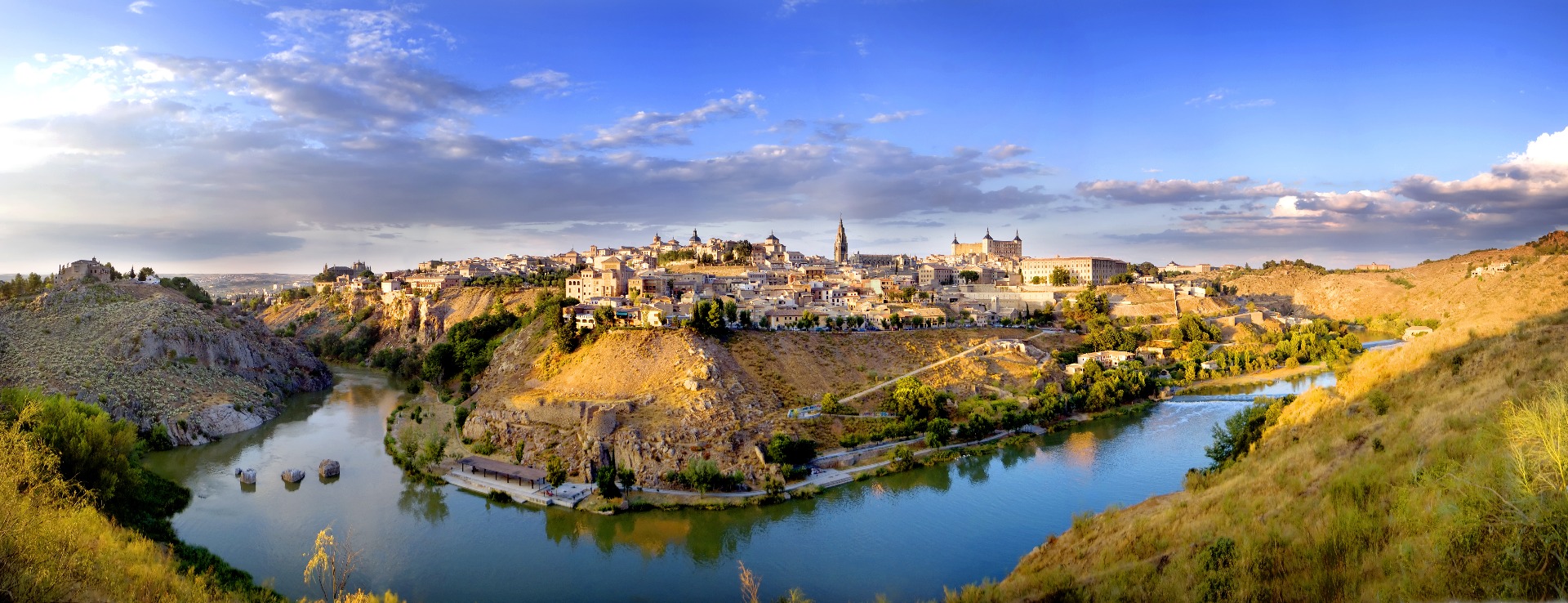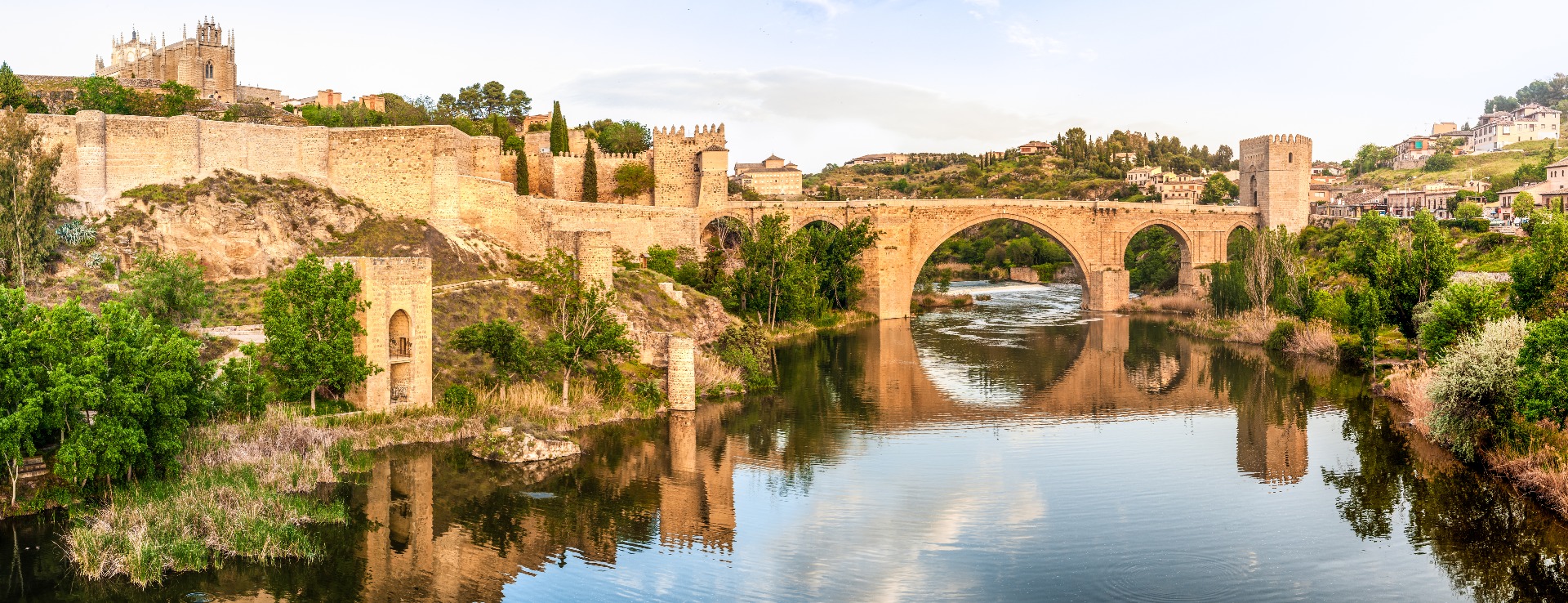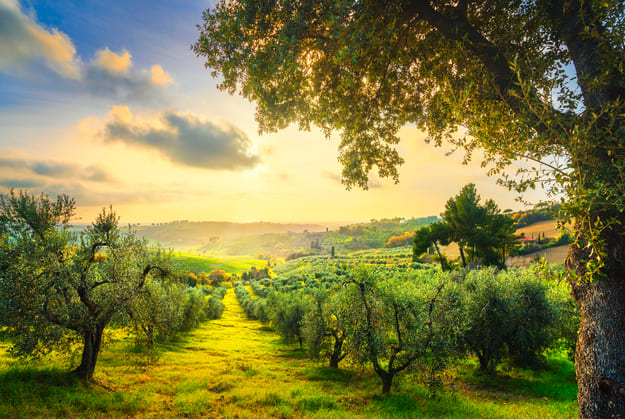Find your olive grove or oil mill
Infographic of the area

Toledo
In Toledo, the DO Montes de Toledo stands out as the only designation of origin for olive trees in the area.
DOP Montes de Toledo
The production area is located in the interior of the Autonomous Community of Castile-La Mancha, in the south-western part of the province of Toledo and the north-western part of the province of Ciudad Real, with the Montes de Toledo as its central axis, forming a fairly homogeneous unit in terms of olive groves.
The area covers an area of 13,037 square kilometres, of which 8,393 correspond to the province of Toledo and 4,644 to the province of Ciudad Real.
Varieties
The Cornicabra variety is grown, which offers an interesting density in the mouth.
Cornicabra oils are extraordinarily stable, with a high content of oleic acid, polyphenols and antioxidants that make them highly resistant to oxidation and rancidity.
History
Olive growing in the Montes de Toledo area, although introduced during the Phoenician and Greek colonisations, was promoted during the Roman Empire.
Mozarabic documents relating to Toledo and its land already mention olive growing.
In the Spain of the Catholic Monarchs, gazpacho with oil and vinegar was a basic part of the diet in this area.
From 1907 onwards, the olive-growing area began to recover. It was at this time that the 'take-off' of the Montes de Toledo area took place, with the exceptional quality of the olives standing out above the volume of production. It was especially in the final years of the Republic when this crop increased considerably and its presence was detected in the south of the Sierra de Gredos.
Climate and soil
This area is centred on the mountainous formation known as the Montes de Toledo. They run in an east-west direction, to the south of the province of Toledo and north of Ciudad Real, separating the valleys of the Tagus and Guadiana rivers. They are a set of mountain ranges with a certain continuity, the highest point of which is the Rocigalgo massif (1,447 m), separated by wide longitudinal depressions crossed by tributaries of the Tagus and Guadiana rivers.
In the centre of the Iberian Peninsula is a group of low-lying mountain ranges known as the Montes de Toledo. This is an area of great ecological value, within whose limits lies the Cabañero Natural Park.
Olive oil mills
Aceites Arges S.A., Aceites de Mora S.A., Aceites Eladio Rodríguez Calvo, Aceites Latino S.L., Aceites Malagón, S.A., Aceites Muñoz S.L., Aceites Palomino Ulla S.L., Aceites Toledo S.A., Agrupación De Olivareros C.B., Bodegas Casagrande S.L.., Cooperativa Acevín, Cooperativa Almazara San Sebastian, Cooperativa la Encarnación, Cooperativa Montes de Toledo, Cooperativa Ntra. Señora del Pilar, Cooperativa Nuestra Señora de la Antigua, Cooperativa Nuestra Señora de la Antigua, Cooperativa Nuestra Señora de la Fe, Cooperativa Nuestra Señora de los Remedios, Cooperativa Nuestra Sra. de Ronda, Cooperativa San Blas, Cooperativa San Sebastián, Cooperativa Santa Cruz de la Jara, Cooperativa Santa Quiteria, Cooperativa Santísimo Cristo Espíritu Santo, Cotoal S.L., Francisco Garcia De La Cruz, IFAMA S.L., La Molineta S.L., Mora Industrial S.A., Morlin S.A., Pratyte S.A., Sdad. Cooperativa Ltda. San Sebastian, La Pontezuela, S.L.U., Aceites Consuegra S.L., S.C.L. San Sebastian de Belvis, Jaramontes S.C.L., Cooperativa Olivar del Cristo, Cooperativa Agrícola El Progreso, Soc. San Sebastian - Sta. Ana De Pusa, Coop. Tesoro de Guarrazar, Coop. Ntra. Sra. de las Saleras, Almazara Villa de Orgaz, Cooperativa Santa Ana, Explotaciones Agropecuarias la Moncloa S.L., La Labranza Toledana and Casas De Hualdo.
Olives
Subscribe to our mailing list to receive news about olive groves and oil mills.



